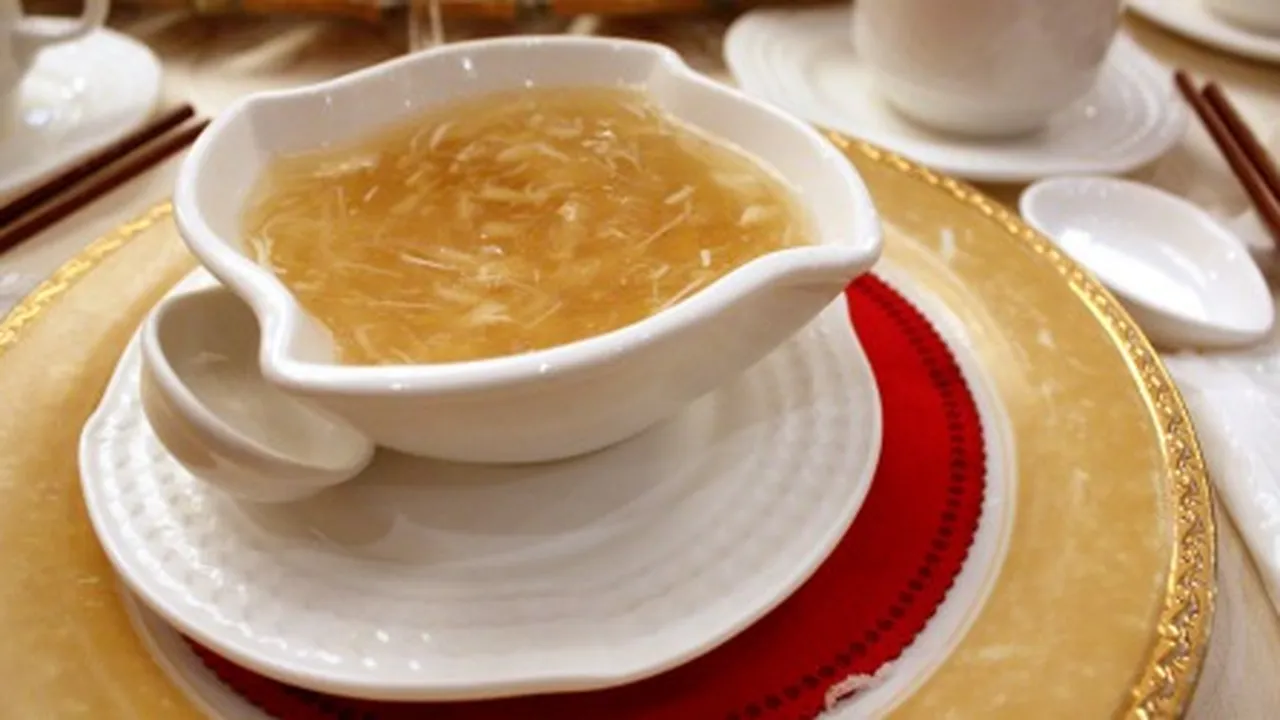
Chamberlains of London – Shark Fin Soup is one of the most iconic dishes in traditional Chinese cuisine. For generations it has been served as a symbol of luxury celebration and honor. This soup often appears at weddings banquets and important cultural gatherings such as the Lunar New Year. The prized ingredient shark fin provides a silky smooth texture that many admire though it contributes little to flavor. As shark fins do not naturally enhance taste the soup relies heavily on additional ingredients like rich seafood stocks oyster sauce mushrooms and spices.
The preparation of this soup often spans multiple days due to the extensive soaking and boiling needed to soften the dried fins. Despite modern controversy surrounding its environmental impact many still view the dish as a nostalgic connection to heritage. In recent years alternatives like fish fin substitutes have been used to replicate the texture while maintaining a sense of tradition at the table.
As concerns over sustainability grow more home cooks have explored alternatives to Shark Fin Soup. Finding real shark fin has become more difficult and expensive due to environmental regulations and shifting public opinion. This has encouraged the use of substitutes such as milkfish fin salmon or even plant-based gelatin strands. These options mimic the texture of shark fin without the ecological cost. Recipes now commonly recommend dried alternatives or packaged imitation fins available at Asian supermarkets.
Substitutes allow families to preserve cultural dishes while adapting to changing times. Home chefs also add crab meat shrimp or scallops to elevate the soup’s taste. These ingredients provide richness and umami which compensate for the lack of flavor in the substitute fin. The preparation method remains nearly identical ensuring the dish maintains its ceremonial quality. In this way modern versions of Shark Fin Soup continue to hold significance during events like Lunar New Year even with modified ingredients.
“Read about: Spaghetti Bolognese Like a True Chef: The Sauce Recipe You’ve Been Missing”
Traditional Shark Fin Soup combines simple ingredients to create a deeply flavorful broth. While the shark fin is prized for its texture the soup’s real depth comes from other components. Dried mushrooms such as hio kow soaked and sliced contribute a savory aroma and umami richness. Crab meat or shrimp adds a natural sweetness that enhances the overall balance. Oyster sauce fish sauce mushroom powder salt and pepper bring complexity to the broth.
Water serves as the base but its transformation relies on these supporting ingredients. Tapioca starch dissolved in water thickens the soup to a luxurious consistency. Fresh herbs such as coriander are often sprinkled on top before serving to give freshness and color. Each of these ingredients plays a specific role in making the dish feel luxurious and festive. They are easy to find and prepare making the soup accessible for home cooks who want to recreate the experience without professional training.
Preparing Shark Fin Soup involves several careful steps that reflect its high status in Chinese culinary traditions. First the dried fin must be boiled for one hour then soaked overnight in its broth. This process is repeated with a fresh boil and soak on the second day. Once softened the fin is drained and cleaned thoroughly to remove any impurities.
While that process unfolds other components such as crab meat are prepared by steaming and hand-shredding. Mushrooms are rehydrated in hot water and sliced thin for even cooking. Meanwhile tapioca starch is mixed with water to be added later for thickening. The soup base is made by boiling water and gradually adding the fin mushroom crab and seasonings. After simmering the mixture the starch solution is stirred in to adjust the thickness. When done correctly the soup has a golden appearance and silky texture that diners often associate with prosperity and warmth.
“Read more: From Sluggish to Supercharged: The Secret to Crushing Laziness Revealed!”
Shark Fin Soup continues to evolve while maintaining its cultural importance during Chinese New Year celebrations. Families now use more sustainable or affordable options while preserving the essence of the dish. The substitution of crab or shrimp for shark fin helps retain the celebratory feel without sacrificing ethics. In many households the soup is served before the main course as a gesture of respect and generosity. Its visual appeal combined with its rich texture makes it a symbol of abundance. Younger generations have embraced modern twists by experimenting with new ingredients and presentation styles. Still the dish connects people to their roots and acts as a reminder of ancestral traditions. Many now prepare it together as a family activity passing down recipes and stories. Even as ingredients change the intention behind serving Shark Fin Soup remains strong keeping this time-honored dish alive for future generations.